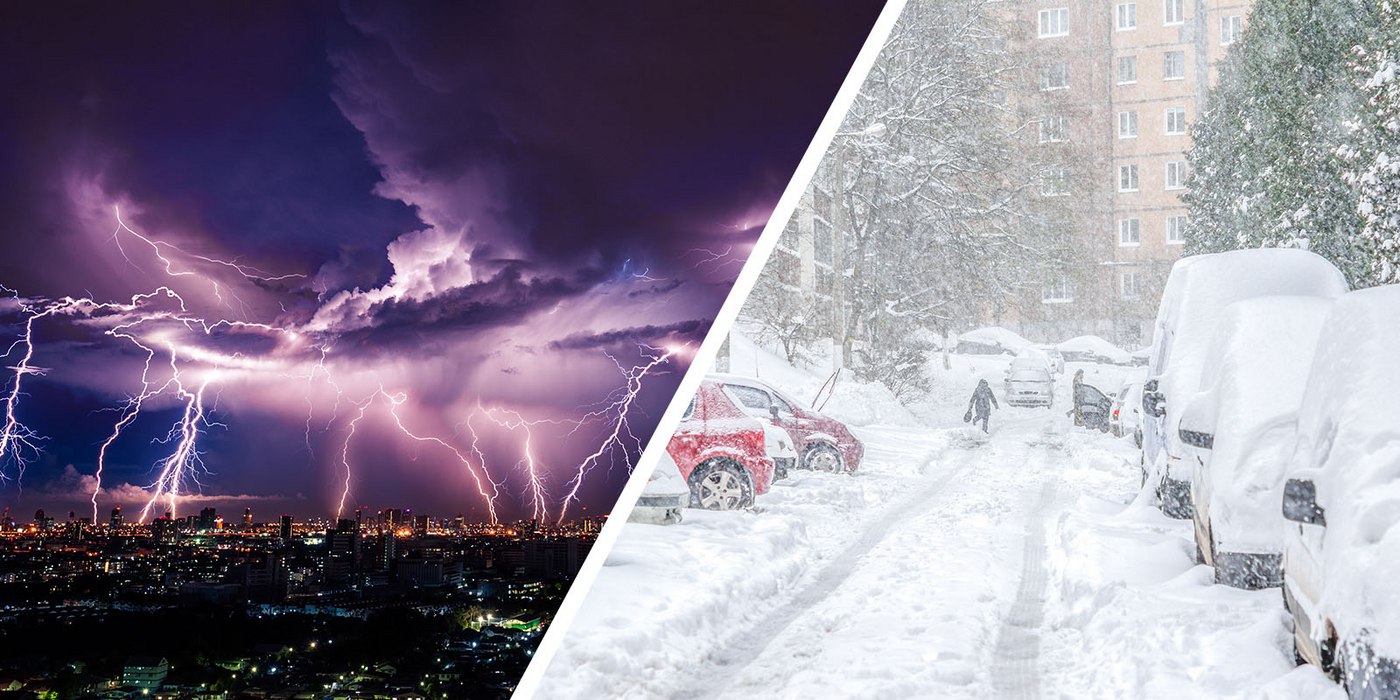Are Your IT Systems Prepared For CT Hurricanes and Blizzards?
From Hurricane Irene in 2011 to the “blizzard of 2013” that dumped two feet of snow across much of the state, Connecticut has seen its fair share of extreme weather. Not only do these natural disasters disrupt people’s daily lives and prevent them from coming into work, they also disable or damage critical business infrastructure and utilities such as power, electricity, and heating.
Extreme weather events can take your business out of commission for a few days or more, preventing you from generating revenue. More nefariously, business disruptions after a natural disaster can subtly erode your customers’ loyalty and confidence when they realize that you don’t have a solid backup plan for keeping your company running.
68 percent of small businesses say that they don’t have a formal disaster recovery plan—a dangerously high percentage, given that 40 percent of small businesses never recover after suffering a disaster. If your on-premises server room is flooded and the machines are destroyed, for example, then you may lose information that’s vital to your operations.
In this article, we’ll discuss four crucial steps that you should take in order to best prepare your organization to weather the storm.
1. Anticipate Scenarios in Advance
Any extreme weather scenario, from lightning storms to tornadoes, represents a risk to your business operations, no matter how small or unlikely. To be fully prepared for disaster events, hold brainstorming sessions about the possible scenarios and then anticipate how you would respond and recover in each case.
If a disaster obliterates your on-site IT infrastructure, for example, you need to have an off-site location where you store backups of your files, accounts, and data. In the event that you encounter freak weather, you can get back up and running much more quickly and easily by restoring your systems from these backups.
Good disaster planning requires you to think creatively about all the ways that your business could break down, and then formulate strategies for defending against or responding to each one.
2. Create a Recovery Plan
Well before a disaster is on the horizon, you should have a well-considered recovery plan in place. In addition, you should review this plan on a regular basis to make sure that it remains relevant to your current business processes.
One of the most important steps is to create as much redundancy as possible for your IT systems and data. For example, if you only store employees’ contact information on an on-premises server, you might be unable to get in touch with them during a disaster if that server goes down. Instead, upload that information to Dropbox or another cloud storage company that will remain accessible during and after the disaster.
In general, you should be using a service that consistently makes copies of your data and stores it in a secure off-site location (or even better, multiple locations). Many managed IT services providers can help you make regular, recurring backups of your files and preserve them in the cloud for emergency situations.
You should also strongly consider giving key employees company-issued cell phones that they can use to keep in touch during extreme weather events. When natural disasters strike, SMS messages are one of the most reliable communication methods.
Sometimes, however, certain key personnel at your organization may be unavailable during a natural disaster. When this occurs, you should be able to bring in external IT consultants who can take over their duties at a moment’s notice. Make sure that your recovery plans for your IT environment are descriptive and detailed enough that an outsider would be able to successfully follow each step.
Finally, if you rely on third-party technology partners or vendors who handle parts of your IT environment, make sure that you have their emergency contact information so that they can help you through the recovery process.
3. Conduct Drills and Tests
Even the most well-planned disaster strategy can fail if it doesn’t match the reality of an extreme weather event. In order to make sure that your recovery plan is useful and legitimate, you need to conduct regular drills and tests.
Depending on the specifics of your disaster strategy, this might involve a sit-down meeting with the key figures who will be charged with executing the plan. You might also do a “dry run” of the plan, where your systems are gracefully (or ungracefully) powered down and you need to restore service as soon as possible.
The purpose of these rehearsals is to find out what’s illogical and broken in your disaster recovery strategy and fix it ahead of time, so that you don’t encounter any unpleasant surprises during a real extreme weather event.
4. Get an Outside Perspective
Even the most well-written disaster recovery strategy can have fatal blind spots that your internal employees will overlook. Bringing in people from outside your company is invaluable when creating plans and running tests.
By giving you a fresh set of eyes, external IT consultants are able to find and understand things that your own people may be missing while “in the weeds.”
Regardless of whether you choose to tackle your disaster recovery or business continuity plan on your own or with the help of an expert, the most important thing is to get started. There's nothing worse than needing to restore everything you and your co-workers have worked so hard to build only to find that "Implement and test disaster recovery plan" is still at the top of your "to-do" list.




